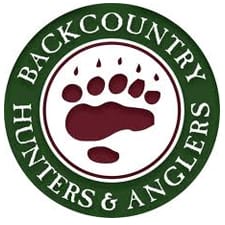By David A. Lien

Colorado Springs, CO –-(Ammoland.com)- Conservation and democracy are among America’s most enduring principles, and each Memorial Day we take time to remember the tens of thousands of veterans throughout our nation’s history who have sacrificed so much to ensure that all of us have the opportunity to experience the benefits of both.
In fact, no other nation enjoys the array of national parks, monuments, rangelands, forests, rivers, and wilderness as the United States, what historian Frederick Turner called the “greatest gift ever bestowed on mankind.”[2]
Most hunters and anglers and others don’t own an estate in Maine or a McMansion in the Rockies, but they have this birthright: an area more than four times the size of France. If you’re a citizen, you own it—about 565 million acres. The deed on a big part of this public land inheritance dates back to a veteran and Medal of Honor winner: President Theodore Roosevelt.
Roosevelt led the Rough Riders’ charge up San Juan Hill, urged America to “speak softly and carry a big stick,” and during his tenure as Commander-in-Chief set-aside over 125 million acres of land as national forests, more than quadrupling the size of America’s national forest system. TR personally established the first 21 forest reserves, which evolved into the present-day 192 million-acre national forest system. He also established the U.S. Forest Service, authorized five national parks, 18 national monuments, and 51 national wildlife refuges.
During a recent 11-day rafting trip through the Grand Canyon, I had the opportunity to experience part of TR’s legacy firsthand. He protected many of the scenic wonders of the West using the 1906 Lacey Antiquities Act to set aside numerous national monuments. The Grand Canyon National Monument in Arizona was one such scenic wonder. The Antiquities Act has been used by 16 presidents to take swift action to protect Americans’ public lands when they are in jeopardy. The list of places saved by this law includes the Grand Canyon, the Grand Tetons, and Denali National Park.
President George W. Bush set aside the 124th national monument, 140,000 square miles of ocean acreage called the Northwestern Hawaiian Islands Marine National Monument. And when President Obama signed a proclamation in November 2011 declaring Virginia’s Fort Monroe a national monument, he joined the ranks of 15 other presidents who have used the Antiquities Act to designate dozens of national monuments over the past century.
National monuments receive less funding and afford fewer protections to wildlife than national parks, but they often allow hunting. For example, the following national monuments (among others) are open to hunting: Carrizo Plain and Giant Sequoia in California, Grand Canyon-Parashant in Arizona, Upper Missouri River Breaks in Montana, Grand Staircase-Escalante in Utah, Craters of the Moon in Idaho, and Canyons of the Ancients in Colorado.
Back in his day, Theodore Roosevelt was called every name in the book by industry lobbyists who hated his policies. They called it a “federal land grab.” History has defined it as protecting hunting and fishing access and opportunity for generations to come. That’s why Americans carved his face on Mount Rushmore.[3]
Roosevelt’s work paved the way for this country’s great and noble tradition of protecting wilderness and wildlife (and hence hunting and angling) via a growing system of national monuments, wildlife refuges, wilderness areas, parks, and preserves. Without these large swaths of protected public lands, hunting and angling as we know them may not have survived the 19th century.
A recent Colorado College State of the Rockies Project poll showed that 96 percent of sportsmen in six western states agreed with the statement that “our national parks, forests, monuments, and wildlife areas are an essential part of … [our] quality of life.” If we follow closely in TR’s footsteps, wildlands and wildlife will continue to survive and thrive, and future generations of hunters and anglers, and others will experience wilderness and wildlife as we have.
As Teddy said, “Those of us privileged to take to the field are entrusted by fate and circumstances to hold and nurture the hunter’s legacy.”
- [1] David Lien is a former Air Force officer and co-chair of the Colorado Backcountry Hunters & Anglers (www.coloradobackcountryhunters.org).
- [2] Michael P. Dombeck, Christopher A. Wood, Jack E. Williams. From Conquest To Conservation: Our Public Lands Legacy. Washington, DC: Island Press, 2003, p. 5.
- [3] Ben Lamb. “HR 4089 Calls for Revisions of Antiquities Act, TR Rolls Over in Grave.” Outdoor Life: 4/27/12.
About Backcountry Hunters & Anglers
BHA is built on a foundation laid down by conservationists like Theodore Roosevelt and Aldo Leopold, who understood that America’s outdoor heritage depends upon healthy ecosystems. BHA’s work is steeped in the values of freedom, challenge, family and adventure, yet at the same time is couched in the sciences of biology and ecology. BHA strives to lead by example, both in the realm of land and water conservation and the realm of ethical hunting and fishing. Our view is not limited to the “here and now,” but extends to the needs and rights of future generations of outdoorsmen and women. Visit: www.backcountryhunters.org

